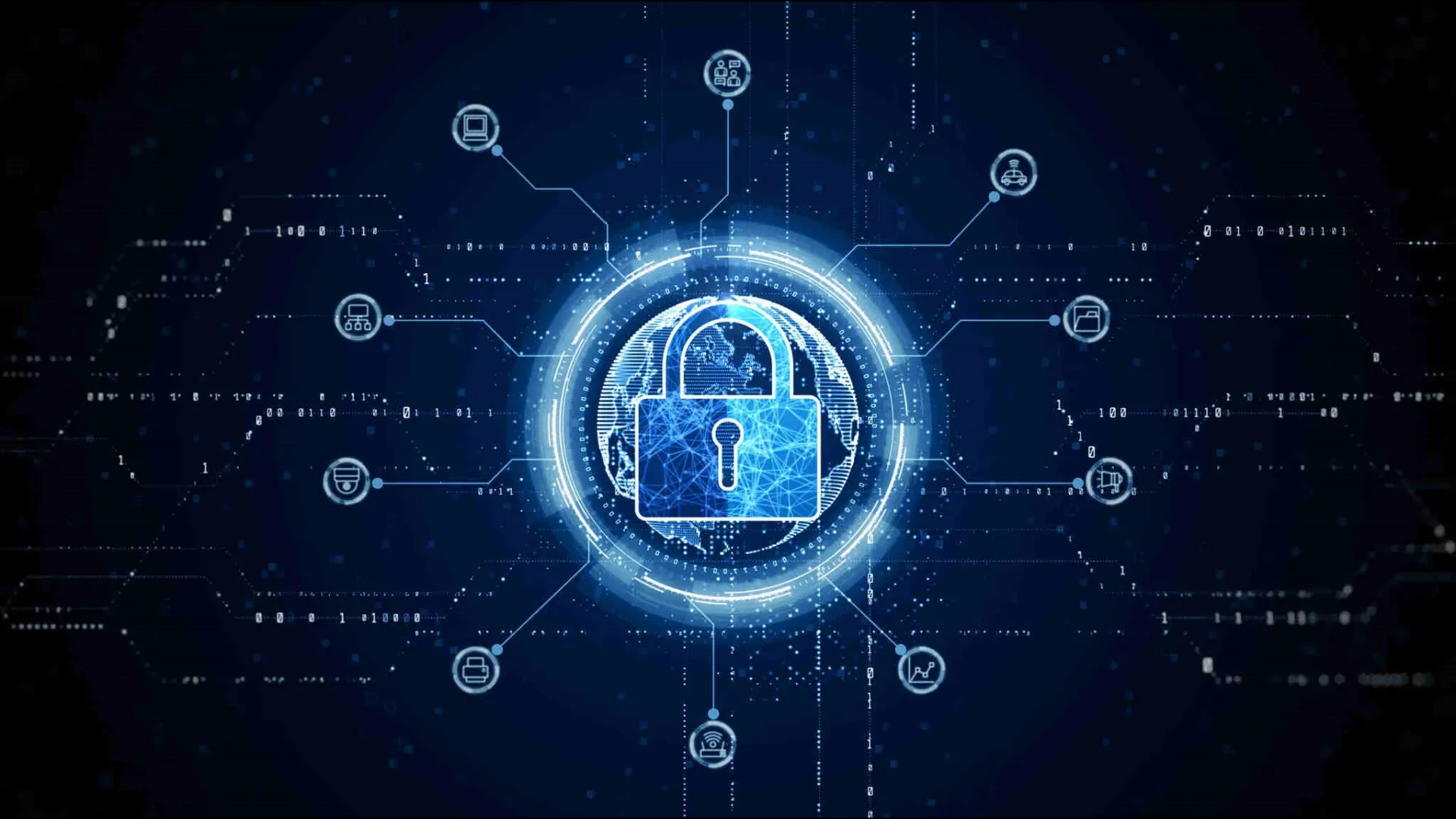Cybersecurity is significant for any business because it defends organizational assets such as corporate data, identities, infrastructure, and reputation from potential cyber threats. The evolution and inclusion of technology in almost every sector has created space for various vulnerable and cybercriminal activities, including data theft, hacking and industrial espionage.
The frequency of cyber-attacks is continuously increasing. Therefore, there is a need to implement reliable cybersecurity solutions and build awareness among employees to effectively manage and respond to cyber-attacks.
What is Cybersecurity?
Cybersecurity is the preparation, implementation, and response for the safeguarding of sensitive data, applications, servers, mobile phones, and IT infrastructure from unauthorized access and cyber-attacks.
Everyone in the organization needs to keep the organizational data protected against unauthorized access. Cyber-attacks are continuously evolving and attackers incorporate sophisticated and latest technologies such as Artificial Intelligence (AI) and Machine Learning (ML) augmented by social engineering that bypass traditional security controls. Cybersecurity is an ongoing process and includes regular and continuous risk assessment along with security infrastructure improvement and upgrades.
In the last two decades, Information Technology has seen unprecedented success, with advancements in almost every sector – including financial, educational, or medical – and has had a significant impact on the global economy. Due to the inclusion of IT systems in various industries, people are now more dependent on technology than ever before. The emergence and development of technologies have not only made a positive impact but have also increased the risk of cyber-attacks.
The swift spread of data breaches is not limited to profoundly regulated industries, such as the banking and healthcare sectors. Small businesses are also at risk of suffering irretrievable financial and reputational damage. As every field is exposed and vulnerable to cyber-attacks, cybersecurity becomes a requirement for protection from these attacks.
A List of Common Cybersecurity Attacks
Cybersecurity threats are spanned in almost every field but can be categorized as follows:
Phishing
Phishing is the oldest and still most common category of attack. It is aimed at the illegal collection of confidential information such as usernames and passwords, financial information including credit card numbers, and bank account details by masquerading as a legitimate website or email.
Malware
Malware is a broad term for various malicious attacks. Malware can be referred to as software that is potentially dangerous and destructive in any aspect. Viruses, ransomware, adware, spyware, worms and trojan horses, etc. fall under the malware definition.
Zero-Day Attacks
These are unpatched security vulnerabilities that are currently only known to a malicious entity before software developers have had an opportunity to create a patch to fix the vulnerability (hence ‘zero-day’). Therefore, if hackers are able to exploit the flaw successfully, this is then known as a zero-day attack.
Ransomware
Ransomware is a type of malware aimed to deny the user access to a computer system, document, or resource until the user pays the ransom amount. Visiting infected websites, phishing emails and malvertising are the most common methods of ransomware spread.
Distributed Denial of Service (DDoS)
This attack is aimed at an illegal attempt to disrupt the service continuity and availability of a web server or resource by overloading it with a huge volume of fake or relayed traffic. DDoS attacks not only target web servers, but also disrupt any service such as database, network, or even explicit features of a service.
Social Engineering
The procedure of tricking and engaging people in the revelation of private and confidential information is called social engineering. Social engineering attacks are widespread because they just have to manipulate or misguide individuals instead of exploiting and compromising security vulnerabilities for access to a network.
Man-in-the-Middle (MiTM) Attack
Man-in-the-Middle (MiTM) Attack includes alteration and relaying of false information between client and server when both parties believe that they are communicating directly.
What are the Effects of Cyber Attacks?
Every cyber-attack is unique in its nature, intensity, and impact, and there is no rule of thumb for estimating or evaluating the direct and indirect costs incurred in the event of a successful data breach, although they can be categorized as follows:
Financial/Monetary Cost
It involves the loss of organizations' or clients’ confidential and corporate information, including intellectual property, as well as the disruption in services, trading, and the cost of repairing and maintenance. Reaching an all-time high, the cost of a data breach averaged USD 4.35 million in 2022. This figure represents a 2.6% increase from last year when the average cost of a breach was USD 4.24 million. The average cost has climbed 12.7% from USD 3.86 million in the 2020 report. Source: IBM Cost of a data Breach Report 2022 by Ponemon institute
Reputational Loss
It includes the loss of consumer trust, current and future customers, and negative media coverage of organizational reputation.
Regulatory and Compliance Cost
There are certain laws such as General Data Protection Regulation (GDPR) in the European Union (EU) that mandate organizations pay regulatory fines or sanctions in case a cybercrime occurs.
Why is Cybersecurity Important?
Cybersecurity is important due to following reasons:
Large Spectrum of Cyber Attacks
There is a broad spectrum of cyber-attacks, hence the protection from these attacks requires substantial efforts and sophisticated knowledge of the threats and their corresponding solutions.
The rise in Cybercrimes
The evolution of technology has led to an increase in the number of connected devices, making them more vulnerable to cyber-attacks.
Increased Attack Vectors for Cyber Attacks
Almost everyone is becoming increasingly reliant on information and communication technology. The inclusion of cloud storage and social media growth has created new loopholes for cyber-attacks. Any digital solution is a potential attack vector and introduces new threats and vulnerabilities
Centralization of Data
Organizations have shifted to the cloud and confidential information such as usernames, passwords and banking details are now stored on the cloud. This has consequently increased the risk of theft. A single cloud compromise can put the data of billions of individuals at stake.
Copy and Paste society
Especially in coding, it is common to copy and paste third party code or open source projects and alter it to fit its needs. This can potentially also lead to an uncontrolled spreading of bugs which can be exploited for a cyber attack.
How Can You Protect Your Employees Against Cybercrime?
Cybercrime can happen through various methods, and ensuring as many security mechanisms in place make you more secure. Following the standard guidelines may protect your organization from cyber-crime:
- Use Up-to-date and Licensed Software: Employees should use the latest and licensed software versions with the latest patches. Instruct them to always download software from trusty and reliable websites. Pirated and cracked software is the major source of malware and Trojan horses.
- Protect your Identity: Employees should avoid giving personal details such as name, social security numbers, credit card numbers, and address on unauthorized and public forums.
- Avoid Pop-ups: Established and recognized companies and organizations never ask for login information through email or phone. So, make sure that your employees are careful about fraudulent text messages and emails. If an email or unrecognized pop-up window asks the user to enter a username or password, inform your employees not to proceed. Instead, they should open the browser and visit the site directly. If your employee has any doubt, then contact the company or entity directly. Know that.
- Ensure that Social Media Information is Private/Locked: Ensure that personal and private information is locked. Avoid posts with public permission/visibility. Social engineering cyber criminals mostly track public social information, so the less information shared by an employee, the better.
- Use Strong Passwords: Easy and simple passwords are subject to brute force and dictionary attacks. Instruct your employees to use strong passwords with alphanumeric characters including small alphabets, capital alphabets, numbers, and special characters with at least more than 8.Passwords should be changed regularly.
How Can You Protect Your Organization Against Cybercrime?
Cybercrime can happen through various methods, and ensuring as many security mechanisms in place can ensure that both the organization and its employees remain secure. Following the standard guidelines can protect your organization from cyber-crime:
- Use Encryption to protect your Data: Protect your confidential data by using encryption. Even if the attacker gets access to your data, it can’t be decrypted. The use of secure and latest cryptographic algorithms and proper key management is the foremost key factor in securing your corporate data.
- Rely on a Public Key Infrastructure (PKI): The purpose of a PKI is to create a trusted environment for connected entities and use of a public and private key. These keys can be used by people, networks, devices and applications.
- Enable Multi-Factor Authentication: Single authentication factors such as username passwords are not sufficient. Always use authentication from a mobile or email code so that if your username/password is compromised, an attacker won’t get access to your identity.
- Use of Hardware Security Modules (HSM): HSM is a dedicated and thoroughly tested/evaluated/certified hardware crypto device to securely generate, store and distribute cryptographic keys. The tamper-resistant feature of HSM makes it almost impossible for an attacker to get unauthorized access to cryptographic keys. HSMs reduce cybercrime and are widely used in general communication sectors and digital payment/financial sectors.
Cyber security awareness is a combination of both knowing and doing something to safeguard a business’s information assets. The cyber security awareness of an organization’s employees is directly proportional to their knowledge and understanding of cyber threats and potential solutions. Cybersecurity awareness is critical because digital technology hosts and supports both business and personal operations. Employees can and should gain a better understanding of the impact of cyber-attack on their business as well as the steps required to reduce risk and prevent cybercrime from infiltrating their online workspace.
Organizations should also dedicate a cybersecurity awareness month to explicitly guide and educate employees on cybersecurity. The effort to create a risk-aware culture within the office not only encourages enterprise-wide knowledge of cyber-attacks, but also helps employees unknowingly or mistakenly become a part of cyber-crime activity.





